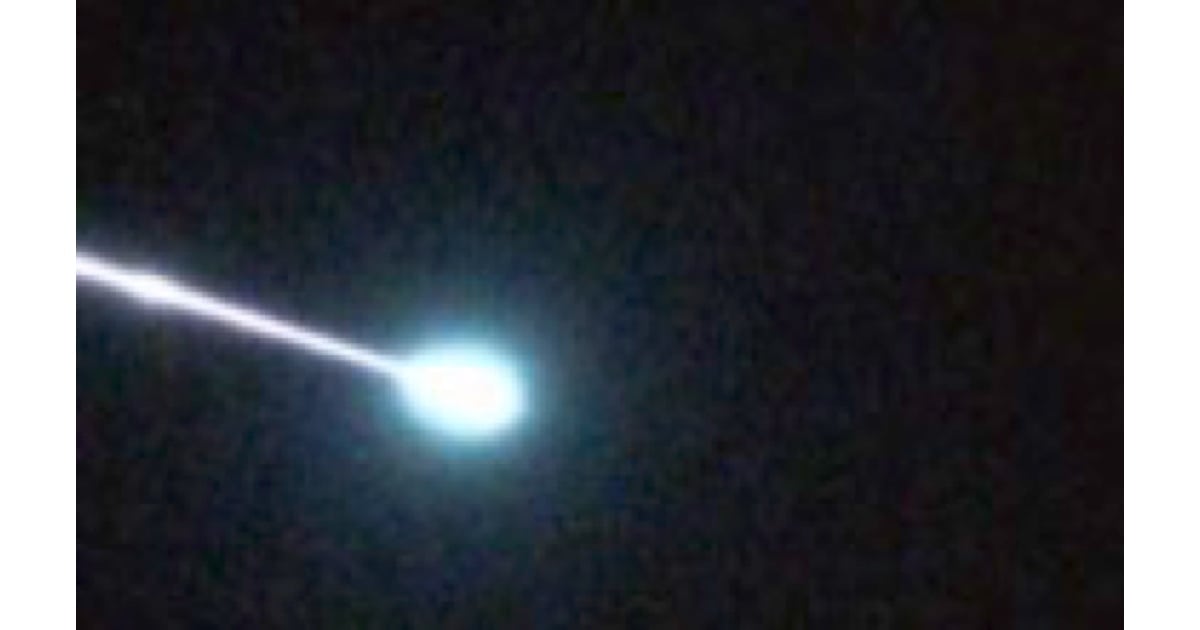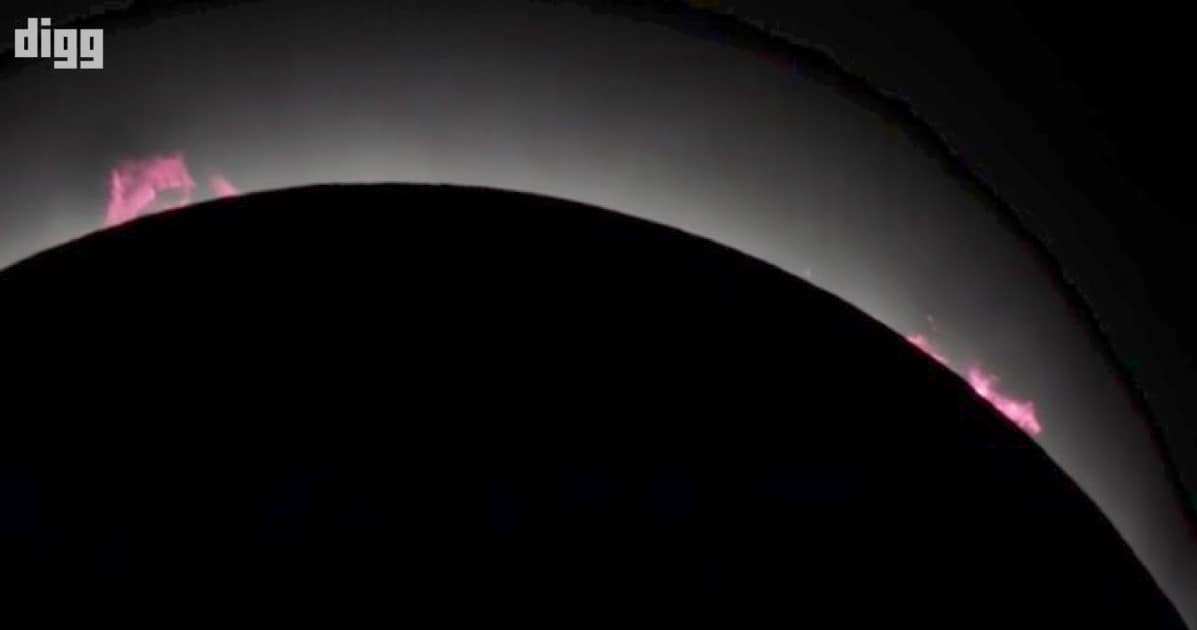With Nocturne by Unistellar, you can take breathtaking pictures of your nighttime adventures and show the world your nocturnal perspective – all in one app. Using Unistellar’s proprietary image processing algorithms, Nocturne brings to life your night scape photographies, allowing you to capture your scene under a showstopping starry sky, at the press of a button. Simply stabilize your iPhone (using a tripod or resting it on a solid surface) and start the capture. The app will generate and stack images to bring out all visible stars on the final photo.
astronomy
Astronomy Professor Dr. Mario Juric - BGM Interview
Dr. Mario Juric is professor of astronomy at the Department of Astronomy of the University of Washington. He holds a Ph.D. in Astrophysical Sciences from Princeton University. His research is at the intersection of astrophysics and computer science and engineering: developing systems and algorithms for use with large data sets to answer questions about the Universe.
We chatted about how Mario was inspired to become an astronomer, and one notable name came up: James T. Kirk. That’s all it took. Oh, and also Isaac Asimov and Arthur C. Clarke. Most of the show, however, centered around two things: mapping our Milky Way galaxy and and his work on the Vera C. Rubin Observatory project, previously the LSST. Starting in 2021, this telescope will capture panoramic images of the entire visible sky twice each week for 10 years, building up our deepest, widest, image of the universe. The result: hundreds of petabytes of imaging data for close to 40 billion objects. One mission: planetary defense!
Astrogator and CEO Mike Loucks - BGM Interview
Mike Loucks is the CEO of Space Exploration Engineering (SEE), which he co-founded in 1995. He received a BA in Physics/Astronomy from Whitman College, WA in 1985 and an MS in Aerospace Engineering Sciences from the University of Colorado in 1991. He co-founded SEE corp. in 1995 after working as an operations and trajectory planning expert for Orbital Sciences Corporation.
The NASA Apollo missions and science fiction by Robert Heinlein got Mike interested and space and astronomy. Early on, he pondered becoming an astronomer but later decided that aerospace engineering was his true passion. We chatted about the founding of SEE and his work there. Mike then told me about the kinds of computer and software tools he uses for orbital and celestial mechanics and the role Macs have played in his life. Mike finished with some great advice for students who want to pursue a career in aerospace engineering.
Astronomy Professor Dr. Emily Levesque - BGM Interview
Dr. Emily Levesque is a professor in the University of Washington’s astronomy department. Her research program is focused on improving our overall understanding of how massive stars evolve and die. She received her bachelors in physics from MIT and a Ph.D. in astronomy from the University of Hawaii.
Emily knew she wanted to be an astronomer from the moment she saw Halley’s comet in the night sky as a child. As an undergraduate at MIT, she was already developing a technical interest in massive stars, the focus of her career. And so we explored massive stars in some detail: formation, evolution and the final fate for many: supernova. Is Betelgeuse, in our own stellar backyard, about to go supernova? Emily weighs in. We finished with a discussion of her new book The Last Stargazers.. It shares the tales and experiences of astronomical observing. And, finally, spiders and lasers.
Cosmologist Dr. Andrew Friedman (#2) - TMO Background Mode Interview
Dr. Andrew Friedman is an astronomer, cosmologist, and data scientist. He’s currently an NSF funded Assistant Research Scientist at the University of California at San Diego Center for Astrophysics & Space Sciences. He is also a Research Affiliate in the MIT Program in Science, Technology and Society. He holds a Ph.D. in Astronomy and Astrophysics from Harvard.
We chatted about the apparent, seemingly contrived conflict between science and religion. We explored some of the sources of this conflict and how, with a good perspective, they are not really at odds. We looked at faith, both in science and religion, Gödel’s incompleteness theorem, proof of God’s existence, varying views about what God is, approaching the subject with humility, and how the Bible cannot really serve as a science textbook. Join us as we get our theology hats on.
What the Sky Will Look Like When We Collide With Andromeda Galaxy
Our Milky Way galaxy and the Andromeda galaxy are gravitationally bound and will collide in about 4 billion years. Because stars are so far apart in a galaxy, many light years, the term “collision” really means interleave and gravitationally interact. Still, it will light up our sky. NASA has done a simulation to show us what it will look like. That is, if anyone is around to watch!
Director, Vatican Observatory Br. Guy Consolmagno - TMO Background Mode Interview
Br. Guy Consolmagno earned his Bachelor’s and Master’s degrees in Planetary Science from MIT and his Ph.D. in Planetary Science from the University of Arizona. He’s been at the Vatican Observatory since 1993 and is currently the director there where his research explores connections between meteorites, asteroids, and the evolution of small solar system bodies. Br. Guy has co-authored two astronomy books as well as popular books such as Would you Baptize and Extraterrestrial?” He is a Jesuit Brother.
We chatted about Br. Guy’s post-graduate work, how he came to be at the Vatican Observatory—and then become the director. He explained why the Vatican has an observatory and how the Catholic Church is not anti-science. Actually he is just part of the Pontifical Academy of Sciences that advises the Pope. And there was much, much more.
TMO Background Mode Interview with Science Historian Dr. Matthew Stanley
Dr. Matt Stanley is a teacher and researcher in the history and philosophy of science. He holds degrees in astronomy, religion, physics, and the history of science and is interested in the connections between science and the wider culture. His Ph.D. is from Harvard in the history of science, and he is currently a professor at New York University.
We chatted about how Matt came to be immersed in physics as well as the history of science and religion. He found that a proper modern perpective depends on an understanding of how science evolved throughout history. We also briefly touched on how science and religion don’t really contradict each other. Matt told me about a very interesting class he teaches, his podcast “What the If,” and his new book EINSTEIN’S WAR: How Relativity Conquered the World.
TMO Background Mode Interview with Astronomer Dr. Clay Sherrod
Dr. Clay Sherrod’s astronomical studies began, soon after his Ph.D. work, in 1970 with the Arkansas Sky, Inc., his private non-profit and educational research and educational program. Although now retired, the work, publications and outreach from him via the Arkansas Sky Observatory ranks among the top in private non-profit facilities.
We chatted about how he got interested in astronomy at age 8. His grandfather, an educator who owned a country farm, was instrumental in introducing Clay to the night sky. In his Ph.D. work at Cornell, Clay studied under the legendary Dr. Carl Sagan, and he remembered Sagan fondly. We chatted about Clay’s career in privately funded astronomy, his work philosophy, the integration of science and religion, and how his talents in music and art enhance his scientific thinking. Clay is a fascinating speaker.
October's Coolest Space Images
Once again, Digg has put together a page of the coolest space images. These are for October.
TMO Background Mode Interview with Planetary Scientist Dr. Pascal Lee, Part II
This is Part II. Dr. Pascal Lee is a planetary scientist with the SETI Institute. He’s also Chairman of the Mars Institute, and Director of the NASA Haughton-Mars Project at NASA Ames Research Center. His research includes the history of water on Mars and planning future human exploration of Mars. Pascal has a Ph.D. in Astronomy and Space Sciences from Cornell University.
In Part I, we chatted about his background and how he became a planetary scientist. We had just started discussing the Search for Extraterrestrial Intelligence (SETI), when an internet outage stopped us cold. So I invited Pascal to return for Part II and discuss his analysis of the Drake Equation and its implications for the existence of other advanced, intelligent life in our galaxy.
TMO Background Mode Interview with Indiana University Astronomer Dr. Catherine Pilachowski
Dr. Catherine Pilachowski is a professor of astronomy at Indiana University in Bloomington. She received her M.S. and Ph.D. in Astronomy from the University of Hawaii. Her principal research interests include the evolution of stars and the chemical history of the Milky Way Galaxy from studies of chemical composition of star clusters. “Caty” got excited about astronomy as a youth reading the books of Asimov, Hoyle and Gamow. She told me about her serendipitous decision to attend graduate school in Hawaii where some very large telescopes were being built on Mauna Kea and how that ultimately led her to her current faculty position. We then chatted about her star cluster research and ended with some great tips for students who want to pursue a career in astronomy.
TMO Background Mode Interview with Planetary Scientist Dr. Pascal Lee
Dr. Pascal Lee is a planetary scientist with the SETI Institute. He’s also Chairman of the Mars Institute, and Director of the NASA Haughton-Mars Project at NASA Ames Research Center. His research includes the history of water on Mars and planning future human exploration of Mars. Pascal has a Ph.D. in Astronomy and Space Sciences from Cornell University. We chatted about how he spent his very early years in Hong Kong, inspired by American and British SciFi TV shows. Later, he migrated to Paris where he continued his education and, inspired by Dr. Carl Sagan, made his way to Cornell in the 1990s. He was Dr. Sagan’s last teaching assistant. Next, we talked about his trips to the remote Canadian island, Devon, to study Mars-like conditions. We wrapped up with an introduction to his thoughts on SETI.
Star Gazers Can Now Sleep Comfortably Under the Stars
Have you ever wanted to sleep, comfortably, under the stars? From Digital Trends: “…’head in the stars’ may sound like a Coldplay lyric but it’s a pretty good description for this tiny house in France being manufactured by a company called SCOP Optinid.” Plus it’s transportable. It’s a star gazer’s dream trailer, with all the amenities, for just US$54,000. Binoculars not included.
TMO Background Mode Interview with macOS Software Developer Sander Berents
Sander Berents has been fascinated by astronomy since childhood when he started using his older brother’s telescope. In his teens, he also became immersed in BASIC and assembly language programming with his TRS-80. Later, he earned an M.S. in astrophysics. His earliest jobs involved computer programming, and nowadays, he’s an independent, professional macOS software developer and the developer of the macOS app called Observatory. Version 1.0 was released in April 2016. We chatted about the development of Observatory, written in Objective-C and C++, which has several important features for astrophotographers: plate solving, image stacking and a digital blink microscope used for discovery. This app can also be used as a non-destructive photo library for astrophotos. Sander chatted about life as a developer and explained a little bit about how astronomers use his app.
Astronomers Have Discovered a Massive Rogue Planet
A rogue planet is a planet that’s not in orbit around any star. It’s by itself, in orbit around the galactic center. It may have formed around a star and perhaps some severe gravitational perturbation ejected it into the space between stars. In any case, only a few are known. In this discovery, a very large one was detected via its radio emissions. Fascinating.
How to Use iPhone to Photograph the Perseids Meteor Shower
The predictions are that we could be in for a spectacular meteor shower, the Perseids, in the early mornings August 12th and 13th. Perhaps 75 meteors per hour. John explains where to look and how to capture some great photos with your iPhone.
TMO Background Mode Interview with Amateur Astronomer Mike Weasner
Mike Weasner is a noted amateur astronomer, known for his book on the Meade ETX telescopes, early iPhone astrophotography and work with the International Dark-Sky Association (IDA) in Arizona. Very early in life, Mike fell in love with astronomy, and that led to a B.S. in astrophysics. Via ROTC, Mike later joined the United States Air Force, where he served as a fighter pilot (A-7D), instructor (T-38), and a manager in the Air Force’s Space Shuttle Program Office. After his USAF duty, Mike spent 23 years as a program manager with TRW/Northrop Grumman. We chatted about his Air Force days and some interesting flight experiences. In the second segment, we talked about the construction of his observatory, evolution of his telescopes, astrophotography of asteroids, supernovae patrol and his work with the IDA.
New LSST Telescope Will Search for Asteroids on Collision Courses
An international team of hundreds of scientists is finishing construction of the LSST telescope, or Large Synoptic Survey Telescope. It will search for asteroids that are on a collision course with Earth. Despite our best technology it’s difficult to detect asteroids, let alone asteroids that are speeding toward our planet. The reason is that asteroids are dark; they don’t give off visible light and are hard to detect in the blackness of space.
With significant funding from the U.S. National Science Foundation, LSST will search for PHAs during its 10-year mission by observing the same area of sky at hourly intervals searching for objects that have changed position. Anything that moves in just one hour has to be so close that it is within our solar system.
TMO Background Mode Interview with IDA Astronomer Dr. John Barentine
Dr. John C. Barentine is an astronomer, historian, author and science communicator. He is currently the Director of Conservation for the International Dark-Sky Association (IDA) in Tucson, Arizona. He earned his master’s degree in physics at Colorado State University and his Ph.D. in astronomy at the University of Texas at Austin. Throughout his career, he’s been involved in education efforts to help increase the public understanding of science. We started with a brief segment on his early career as a observing specialist at Apache Point Observatory in New Mexico. In the second segment, we chatted about his work at the IDA in Tucson, the organization, its goals, and why it’s so important for all of us who live on planet Earth to be able to look up on a clear night and see stars.
It's Summer! Here are 4 Summer Activity Apps For Your Adventures
Except for one, Andrew regularly use these apps so he knows they’re good.
Track the Position of Elon Musk's Tesla Roadster with Starman
Ben Pearson, an electrical engineer by training, has put together a website that tracks the Tesla Roadster that the SpaceX Falcon Heavy put into orbit around the sun. His website scripts extract data from from JPL Horizons to provide continuous updates on the position of Roadster’s passenger Starman. Check it out.
A Beautiful High-Definition Video of 21 August Solar Eclipse
Digg has posted a drop-dead gorgeous, high definition video (2m:18s) of the August 21 solar eclipse. At totality you can solar prominences. The accompanying music is great too. Regrettably, no source or credit is provided.
TMO Background Mode Interview with iOS & Android Indie Developer Graham Dawson
Graham Dawson is an iOS and Android indie developer who specializes in meteorological and astronomical reference apps. He’s the founder and director of Ajnaware Pty, Ltd in Australia and publishes apps under the name ozPDA. Graham holds a B.Sc. in physics and meteorology, and a Ph.D. in oceanography. Graham told me about his early interest in weather thanks to extreme conditions, especially snow. That’s because, in his youth, he was skiing in Switzerland. Soon he had a weather observation station in his backyard, and he could think of nothing else as he entered his undergraduate years. Today, he publishes a wide range of apps related to the sun, moon, wind, weather and time. Some feature augmented reality. Thanks to his academic background, these apps have rock solid computational credentials. Graham told me how it all came to be.





















